Aboriginal Symbols of Fauna and Wildlife
| WARNING: Aboriginal and Torres Strait Islander people are warned that this website contain images, voices and names of people who have passed away. |
Indigenous Symbols, Iconography and Imagery
- Aboriginal Symbols
———————————— - Man Woman Child
- Human Activity
- Tools & Weapons
———————————— - Bush Food
- Bush Medicine
- Wildlife
- Emu
- Goanna
- Honey Ant
- Kangaroo
- Thorny Devil
- Witchetty Grub
————————————
- Landscape & Country
- Rain & Water
————————————
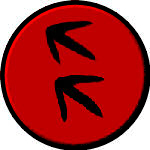
In the depiction of the Emu, many artist stamp their own unique way of portraying the bird, whether it is just showing the tracks left as the bird passes by or as the flattened outline or three dimensional form.
There are a number of Aboriginal dreaming stories about the emu. They are considered creator spirits that used to fly over the land. If you look up into the night sky, you can see the Emu in the Sky. The shape of the emu is defined by the Milky Way (including the dark patches) and the Southern Cross. How the emu got there differs between aboriginal language groups.
Many of the dreaming stories detail the emu as an ancestral spirit. Artists such as Tjungkiya (Linda Syddick) Napaltjarri, whose father and step-father were both Tjungarrayi and shared the same Dreaming, would often be depicted by Linda as the Emu.
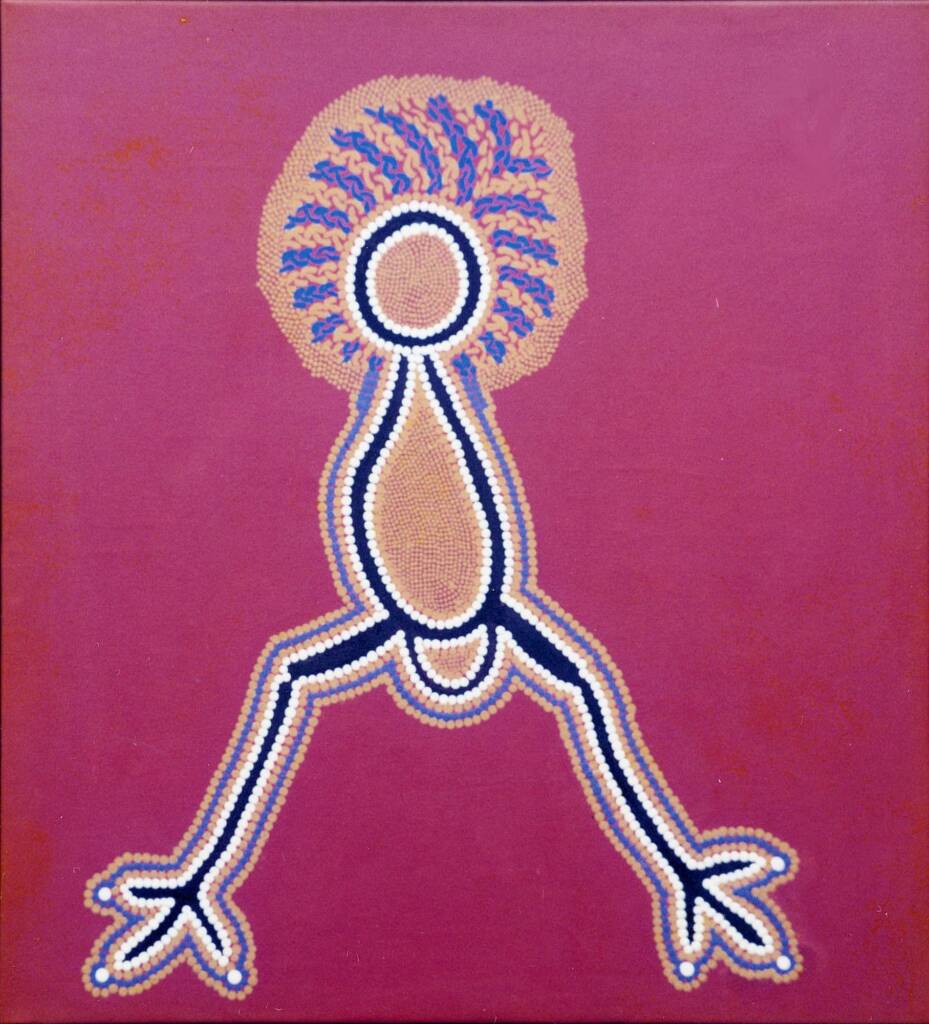
In a number of her paintings she would depict both ancestral spirits of the Emu and the Kangaroo, as representing her two fathers.
Source: Gallery Gondwana
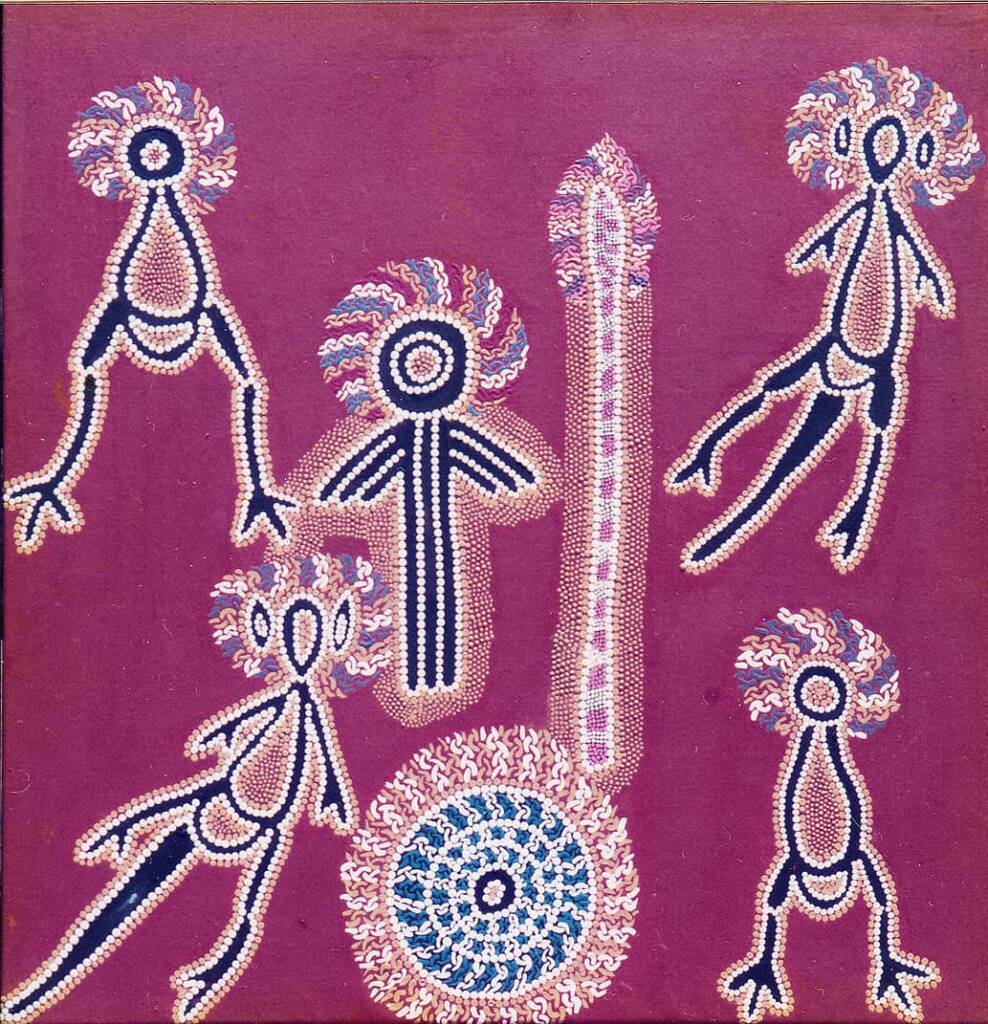
© Linda Syddick / Source Gallery Gondwana (Cat 1746)
Ancestral Emu Men
The stick figures in some of Linda’s painting depict Ancestral Emu Men, associated with the creation of the great salt of Lake Mackay in the Gibson Desert near the borders of Northern Territory and Western Australia. During the Creative Era, the Emu Dreaming followed the Water Dreaming in its journey west and Emu Ancestral men are said to have pierced the clouds with their spears to make it rain.
Those of the Tjapaltjarri / Tjungarrayi and Napaltiarri / Nungarrayi moiety subsection group are the custodians of this Dreaming and are responsible for the upkeep of the knowledge and traditions that are associated with it. Linda refers to one of these emu men as her grandfather and the other emu men when present, his Tjungarrayi brothers. During the Creative Era these men possessed the ability to metamorphise from human to animal.
Source: Gallery Gondwana
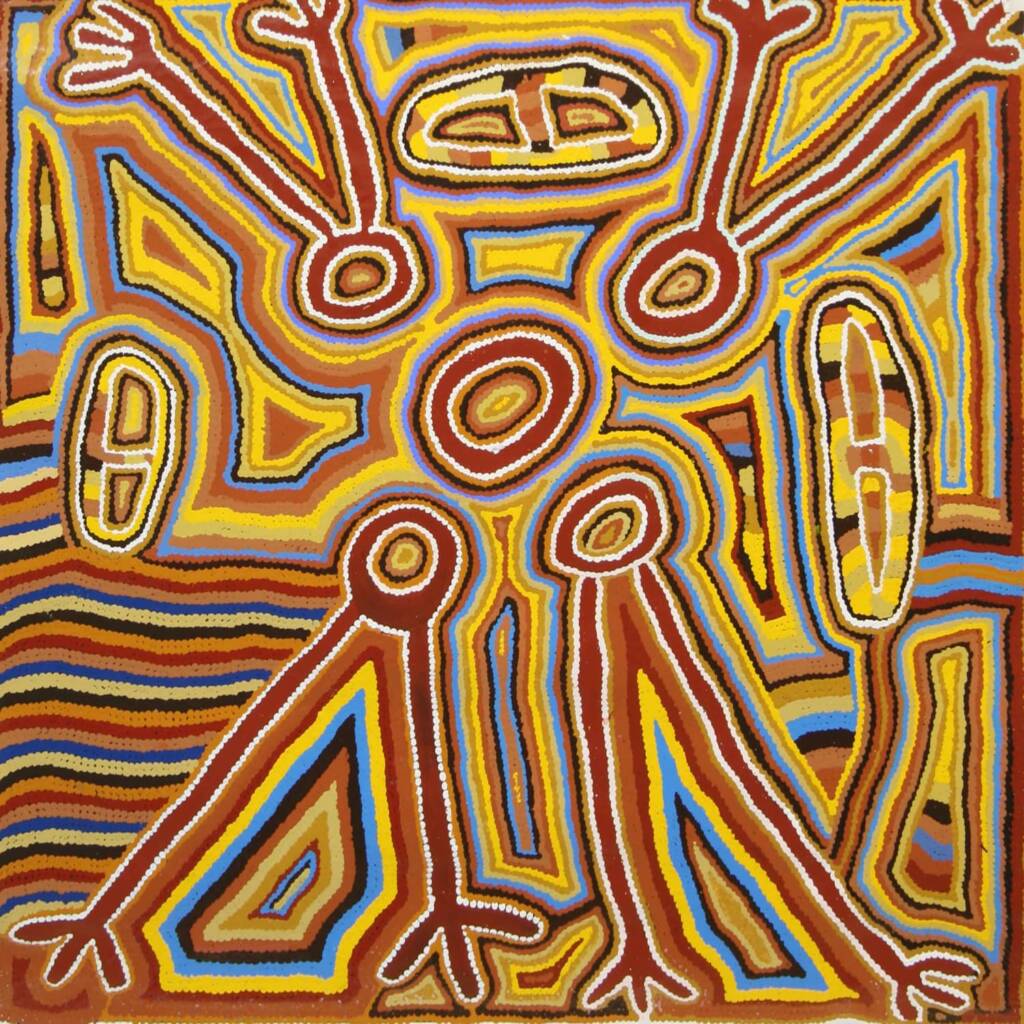
Source Gallery Gondwana (Cat 2268LS)
If you want to read more about Linda Syddick, Gallery Gondwana have a series of articles about Linda Syddick, her partner Russell and her family and the influences on her as an artist.
Animals have always played a significant part in Indigenous culture, whether it is a totemic relationship, and part of a dreaming, and as food.
Appearing in the artwork of many Aboriginal artist, the emu like many of the totemic wildlife that are depicted, goes beyond the physicality of bush tucker, being an integral part of their culture and dreamtime and a way of connecting, sharing and passing on knowledge, and what to our western perspective is simply titled, such as in ‘Emu Dreaming’.
In the following beautiful painting by artist Raymond Walters Japanangka, he depicts not only emus, but the country they travel across, colours representing landscape, water and plants. The painting at the top of this page (in the header) is also by Raymond and is titled ‘Emu Dreaming‘.
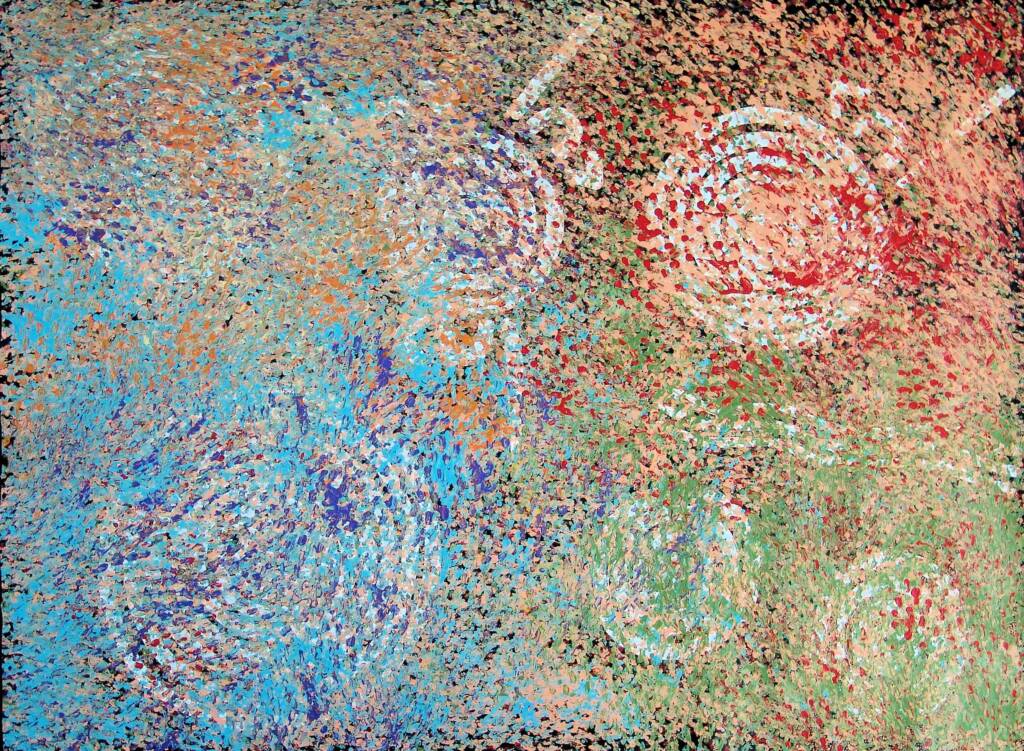
The emu features in many Dreamings and the artworks that depict the stories. There are stories of emus crossing country, in search of food. Other stories tell how he lost his wings in a bush fire, losing the ability to fly.
Aboriginal people have traditionally hunted the emu as a source of food, hunting out of necessity and respecting their country. The eggs of the emu are also an important source of bush tucker. The bones of the emu are fashioned into tools and weapons, the skin into leather, the tendons used as string, the fat is used for lubrication and bush medicine, whilst the feathers are for ceremonial dress.
Check out our Fauna Index – Birds section for information about the Emu.
Footnote & References
- Australia’s first astronomers, by Maryke Steffens, Beginner’s Guide to the Night Sky, ABC Science, https://www.abc.net.au/science/articles/2009/07/27/2632463.htm
- Tjungkiya (Linda Syddick) Napaltjarri, Gallery Gondwana, https://gallerygondwana.com.au/
